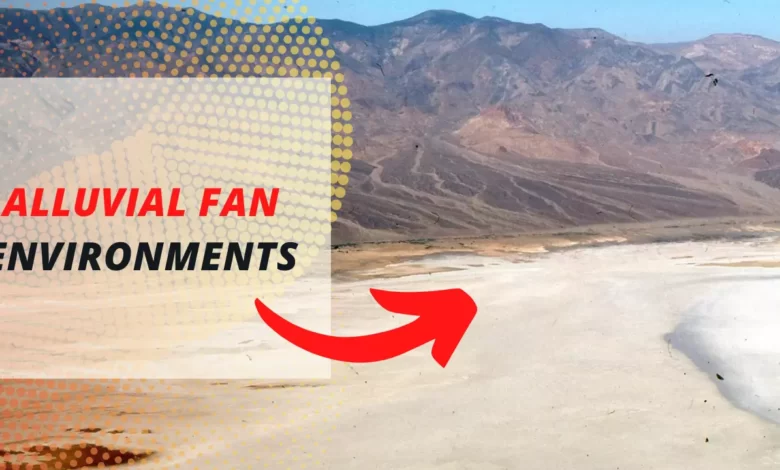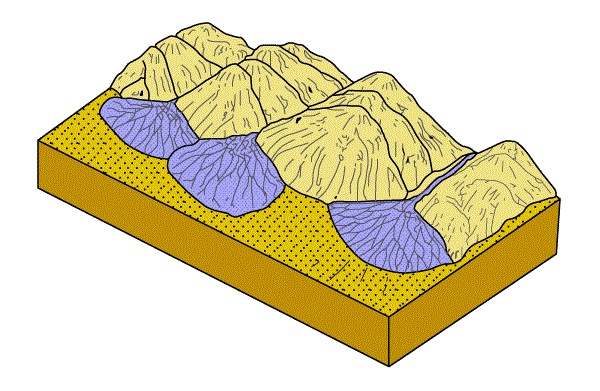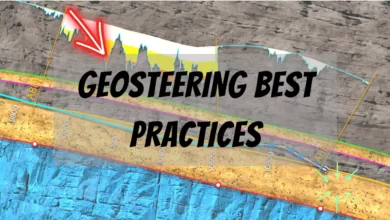
Introduction
Alluvial fan represent an environment of sudden transition, where narrow, steep mountain or upland valleys disgorge sediment onto an alluvial plain. Rapid erosion supplies coarse, often bouldery detritus, which builds a debris cone out from the mountain base. (Figure 1, Block diagram showing alluvial fan deposition in a semiarid to arid environment.) Thus, both on the earth’s surface and in the sedimentary record, fans are commonly banked against structurally complex mountain fronts.

At times, they are juxtaposed with older, highly deformed sediments; at times, directly with basement. In gross compositional aspect, fans will usually show an upward progression that reveals the order in which material of the rising mountain block was attacked by erosion.
Alluvial fans are often referred to as syntectonic (“syn” = during) deposits, being generated by tectonic regimes of rapid uplift, and should be expected to have developed in almost any setting where orogenic activity has occurred inland from coastal areas. Where aggressive mountain building has taken place along the margins of marine basins, fans commonly prograde from a strictly terrestrial setting into a more transitional-marine regime, known as a fan delta. In arid and semiarid climatic settings, alluvial fans often develop without significant depositional interruption until they coalesce laterally to form bajadas. These have extensive, sheet-like geometries with internal depositional complexity. Fanglomerate is the rock term employed for the coarsest, and in some ways, most diagnostic, proximal lithology of the fan environment.
Much of the sedimentation that takes place on the fan itself is done by the work of ephemeral braided streams; accurate analysis, therefore, recognizes a normal, though partial, correspondence between the alluvial fan and braided alluvial environments. For the sake of relative convenience, we treat these facies separately. The student should, however, be aware that this introduces a certain degree of artificiality into normal facies analysis.
In the sedimentary record, preserved fan deposits are particularly evident in deposits of Late Paleozoic – Early Mesozoic and Late Mesozoic – Mid-Tertiary age. These represent times of significant tectonic activity throughout much of the world. In North America, the Pennsylvanian-Permian time span is especially characterized by fan and fan delta development in the Appalachian, Rocky Mountain, and New Mexico-Texas-Oklahoma regions.
Generally speaking, the style of deposition on alluvial fans prevents them from acting as good reservoirs. To date, there are only a few, clear-cut examples of fields producing from terrestrial fan facies. (Fan deltas, meanwhile, are productive in many parts of north Texas and southern Oklahoma. Refer to Moore (1979) for an overview of Late Paleozoic paleogeography in this region.) They are often, however, extremely important to recognize and delineate in the subsurface due to their indication of both tectonic setting and source area composition. Given this, and the fact that fans commonly grade into alluvial plain environments – whose sediments have far greater potential to be good reservoirs — alluvial fans can serve as associated fades of crucial significance.





